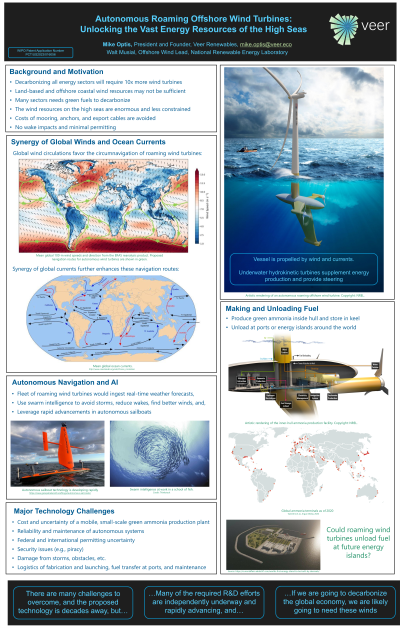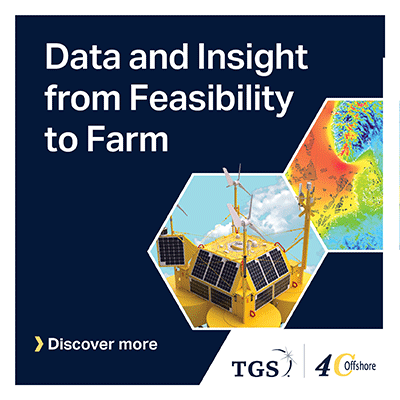Wind: Offshore & Metocean
Unmoored Offshore Floating Wind: Unlocking the Vast Energy Resources of the High Seas
Tuesday, November 14, 2023
4:15pm - 5:15pm CST


Mike Optis, PhD (he/him/his)
President
Veer Renewables
Courtenay, British Columbia, Canada
Presenter(s)
Presentation Description: All offshore wind turbines to date are moored to the seabed with strict station-keeping criteria to enable the transmission of electric power through subsea cables. This limits offshore wind to coastal areas near load centers but often in close proximity to other ocean users. As the world rapidly moves towards decarbonizing all energy sectors, we may need to explore larger, more unrestricted sites, such as the deep ocean.
The feasibility of unmoored, unmanned, self-navigating offshore wind turbines that harness the vast winds of the high seas (covering over 60% of the earth's surface) is currently under investigation, but at a very early stage. Building upon stationary floating offshore wind and marine current turbine technologies, as well as emerging technologies for hydrogen production, these autonomous, mobile power plants could each deliver thousands of tons of renewable liquid fuels annually (e.g., ammonia) to collection points, unlocking a significant new offshore wind resource opportunity.
This presentation will outline the basic concepts of floating offshore wind and discuss the challenges that must be overcome before unmoored offshore wind becomes a reality. The topic areas to be addressed include logistics, vessel design, wind resource assessment, renewable fuel synthesis, legal considerations, as well as cost and financial projections.
The feasibility of unmoored, unmanned, self-navigating offshore wind turbines that harness the vast winds of the high seas (covering over 60% of the earth's surface) is currently under investigation, but at a very early stage. Building upon stationary floating offshore wind and marine current turbine technologies, as well as emerging technologies for hydrogen production, these autonomous, mobile power plants could each deliver thousands of tons of renewable liquid fuels annually (e.g., ammonia) to collection points, unlocking a significant new offshore wind resource opportunity.
This presentation will outline the basic concepts of floating offshore wind and discuss the challenges that must be overcome before unmoored offshore wind becomes a reality. The topic areas to be addressed include logistics, vessel design, wind resource assessment, renewable fuel synthesis, legal considerations, as well as cost and financial projections.
Learning Objectives:
- Upon completion, participants will have been thoroughly introduced to the concept of harvesting deep sea offshore wind resources.
- Upon completion, participants will understand the many challenges needing to be solved before unmoored offshore wind can become a reality
- Upon completion, participants will see how many of these challenges are already being addressed when considering advancements in renewable fuel production, offshore wind turbines, and autonomous offshore navigation.

